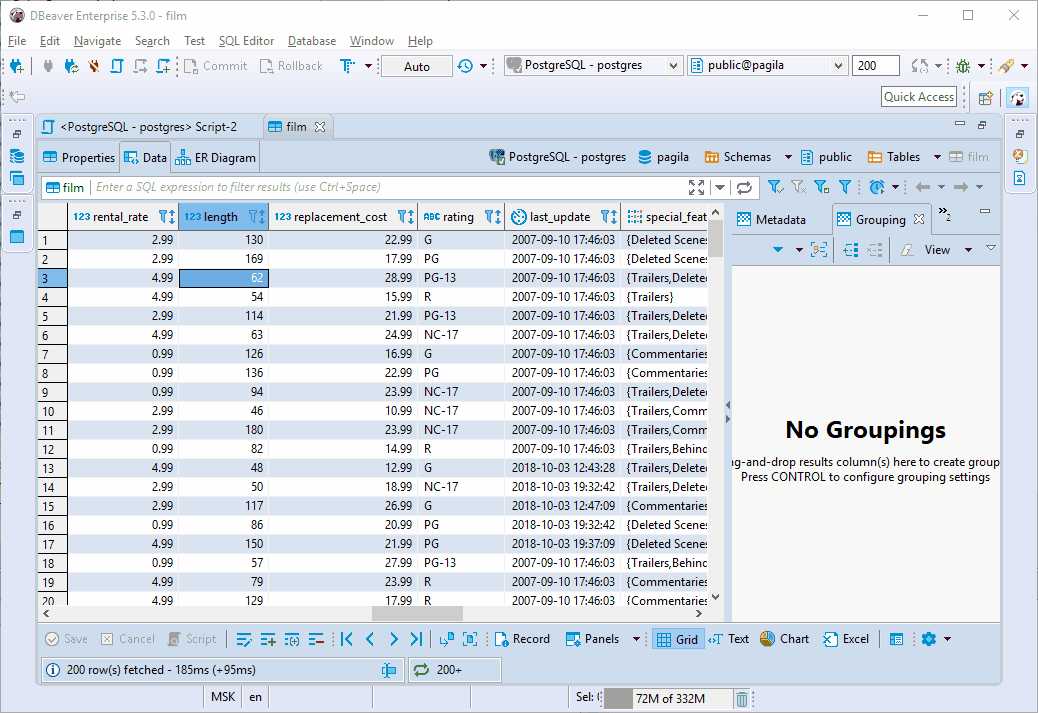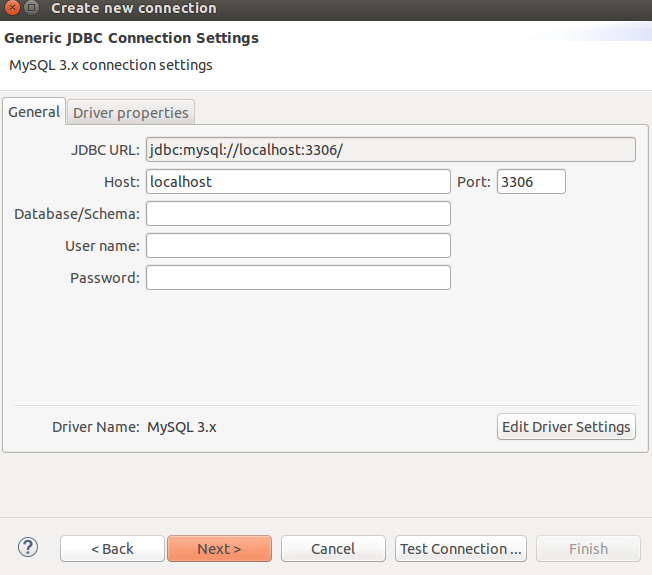The CData JDBC Driver for MariaDB implements JDBC standards that enable third-party tools to interoperate, from wizards in IDEs to business intelligence tools. This article shows how to connect to MariaDB data with wizards in DBeaver and browse data in the DBeaver GUI.
- Dbeaver Mariadb Access Denied
- Dbeaver Mariadb Connection Refused
- Mariadb Dbeaver Driver
- Dbeaver Mariadb Docker
- Dbeaver Mariadb Driver Files Are Missing
Create a JDBC Data Source for MariaDB Data
- DBeaver is a free multi-platform database tool for developers, SQL programmers, database administrators and analysts. It supports all popular relational databases: MySQL, MariaDB, PostgreSQL, SQLite, Oracle, DB2, SQL Server, Sybase, Teradata, Netezza, etc.
- Lets you view and edit data from MariaDB, MySQL, Microsoft SQL, or PostgreSQL.
- MariaDB Server is one of the most popular open source relational databases. It’s made by the original developers of MySQL and guaranteed to stay open source. It is part of most cloud offerings and the default in most Linux distributions.

Follow the steps below to load the driver JAR in DBeaver.
We are going to use the MariaDB server as it's already installed on our test server. If you don't have it, follow these steps to install MariaDB on CentOS server. Now, let's install a must-have requirement, JAVA: $ sudo dnf install java-11-openjdk-devel $ sudo yum install java-1.8.0-openjdk java-1.8.0-openjdk-devel.
- Open the DBeaver application and, in the Databases menu, select the Driver Manager option. Click New to open the Create New Driver form.
- In the Driver Name box, enter a user-friendly name for the driver.
- To add the .jar, click Add File.
- In the create new driver dialog that appears, select the cdata.jdbc.mariadb.jar file, located in the lib subfolder of the installation directory.
- Click the Find Class button and select the MariaDBDriver class from the results. This will automatically fill the Class Name field at the top of the form. The class name for the driver is cdata.jdbc.mariadb.MariaDBDriver.
- Add jdbc:mariadb: in the URL Template field.
Create a Connection to MariaDB Data
Follow the steps below to add credentials and other required connection properties.
- In the Databases menu, click New Connection.
- In the Create new connection wizard that results, select the driver.
- On the next page of the wizard, click the driver properties tab.
Enter values for authentication credentials and other properties required to connect to MariaDB.
The Server and Port properties must be set to a MariaDB server. If IntegratedSecurity is set to false, then User and Password must be set to valid user credentials. Optionally, Database can be set to connect to a specific database. If not set, the tables from all databases are reported.
Built-in Connection String Designer
For assistance in constructing the JDBC URL, use the connection string designer built into the MariaDB JDBC Driver. Either double-click the JAR file or execute the jar file from the command-line.
java -jar cdata.jdbc.mariadb.jarBasis science port devices driver download for windows 10. Fill in the connection properties and copy the connection string to the clipboard.
Below is a typical connection string:
jdbc:mariadb:User=myUser;Password=myPassword;Database=NorthWind;Server=myServer;Port=3306;
Query MariaDB Data
Dbeaver Mariadb Access Denied
You can now query information from the tables exposed by the connection: Right-click a Table and then click Edit Table. The data is available on the Data tab.
How to install DBeaver on CentOS
For ease of access and work with databases, it's always good to have the GUI. Yes, working with a large number of databases sometimes requires us to use GUI solutions. I personally prefer console access to the database. But, in scenarios with a focus on the underlying cause, any GUI is welcome. Today, we will run through the process of how to install DBeaver on CentOS.

DBeaver is the database management tool and if you are installing it on a remote CentOS server, make sure you have the RDP service installed first! Otherwise, just continue from here.
Pre-requirements
Before we can install DBeaver on CentOS let's make sure that we have at least one of the database engines installed. This is a list of DBeaver supported database engines:
- MySQL
- PostgreSQL
- MariaDB
- SQLite
- Oracle
- DB2
- SQL Server
- Sybase
- MS Access
- Teradata
- Firebird
- Derby
We are going to use the MariaDB server as it's already installed on our test server. If you don't have it, follow these steps to install MariaDB on CentOS server.
Now, let's install a must-have requirement, JAVA:
Dbeaver Mariadb Connection Refused
Check if it's installed by running:
Installation
Download the DBeaver package:
Execute the installation:
That's it! Now, find the launcher for DBeaver and hit it:
If you want, DBeaver can create a test database for you to begin exploring it. Otherwise, you can connect it to your own database and continue from there.
Connect to Database
Let's connect the DBeaver to our database now! First, navigate to Database - New Database Connection:
Mariadb Dbeaver Driver
Drivers blitzz. Next, let's select our database engine (in our case MariaDB):
Almost there! Now, use our database user credentials to connect DBeaver to MariaDB:
Dbeaver Mariadb Docker
That's it, now we can see our local databases served by MariaDB server:
Voila! Now, the real work can begin 😁! Read you later ✌️.
Dbeaver Mariadb Driver Files Are Missing
Related Articles:
How to install MariaDB on CentOS
How to install Remote Desktop Service on the CentOS
